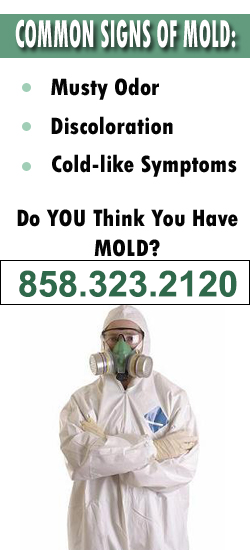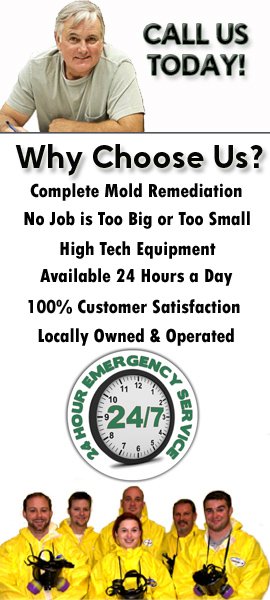Just by chance, have you ever wondered what that unsightly, fuzzy substance growing in damp corners of your home might be? You guessed it, we’re talking about mold.
It’s an unwelcome intruder that creeps into our homes, often unnoticed. Mold comes in various types, each with its unique risks and hideouts.
But why should we care? Well, not only can mold cause significant damage to our homes, it can also pose serious health risks.
Now, wouldn’t you want to know more about this silent invader?
Identifying Different Mold Types
To keep our homes safe and healthy, it’s crucial we’re able to identify different types of mold that may be lurking in our living spaces. Mold, a common household invader, is a type of fungi that thrives in damp environments and reproduces by releasing spores into the air. When we breathe these spores in, they can cause health problems, especially for those with allergies or respiratory conditions.
First off, there’s Cladosporium, a common outdoor fungus that can easily find its way indoors. It’s often green, brown, or black and can grow on a variety of surfaces, including carpets and fabrics.
Then we’ve Aspergillus, a type of mold often found on foods and in air conditioning systems. It’s typically yellow or green, and while some species are harmless, others can produce harmful toxins.
Another type to watch for is Penicillium, a blue or green mold often found on food, walls, and insulation. It spreads easily and can lead to respiratory issues.
## Health Risks Associated With Mold
Now that we’ve identified the common types of mold in our homes, let’s examine the potential health risks they can pose. Exposure to mold can lead to a variety of health issues that range from mild to severe. It’s important to remember, though, that reactions can vary greatly from person to person.
For some, exposure to mold might cause minor allergic reactions such as sneezing, runny nose, red eyes, and skin rash. People with mold allergies may have more severe reactions, including shortness of breath. In people with asthma who are allergic to mold, exposure can trigger asthma attacks.
But we shouldn’t assume that mold is only a threat to those with allergies or asthma. Long-term exposure to mold can affect anyone. Certain types of mold produce mycotoxins, chemicals that can cause serious health problems. Prolonged exposure to these mycotoxins can lead to neurological problems and, in some cases, death.
Mold can be particularly harmful to people with compromised immune systems, including the elderly and those battling chronic illnesses. In these individuals, mold can lead to dangerous infections in the lungs and other parts of the body.
We can’t stress enough how crucial it’s to treat and remove mold as soon as it’s identified. Ignoring the problem won’t make it go away. In fact, given the right conditions, mold will continue to grow and spread, escalating the risk for health problems.
Common Indoor Mold Hideouts
Often, we unknowingly provide perfect hideouts for mold in our homes, which can lurk in less obvious areas. This invisible intruder thrives in moist, humid conditions, and it’s not always found in the places we’d expect.
Bathrooms, kitchens, and basements are the usual suspects. We’re all aware of the potential for mold in a damp shower stall or under the sink. But what about less obvious spots? Places like our HVAC systems, wallpaper, carpet, and even houseplants can harbor mold. These areas provide the warmth, darkness, and moisture mold needs to flourish.
Our HVAC systems, particularly ductwork, are prime real estate for mold. Condensation can build up, providing a welcoming environment for spores to settle and grow. Once mold takes hold here, it can easily spread throughout the house via the ventilation system. Routine maintenance and regular cleaning can help prevent this.
Wallpaper and carpet may not seem like typical mold hotspots, but they can trap moisture, especially in humid climates or if there’s been water damage. It’s essential to dry out these items thoroughly if they get wet and consider replacing them if mold becomes an issue.
Houseplants are another surprising source of mold. The soil provides an ideal environment for mold to grow, and it can then spread to the plant’s leaves. To prevent this, avoid overwatering and provide good airflow around your plants.
In short, we need to be vigilant and proactive in checking these common indoor mold hideouts, ensuring our homes are dry, well-ventilated, and mold-free.
Steps to Prevent and Control Mold
Let’s dive into the practical steps we can take to prevent and control mold growth in our homes.
The first step is to control humidity levels. We should aim to keep our indoor humidity below 60%, ideally between 30-50%. We can use dehumidifiers and air conditioners to achieve this. It’s important to ensure our homes have adequate ventilation, particularly in high-moisture areas like the kitchen, bathroom, and laundry room.
Next, we need to fix any leaks promptly. Whether it’s a leaking roof, windows, or pipe, we should repair it as soon as possible. Remember, mold loves moisture and can start growing within 24-48 hours of a leak.
Thirdly, we should clean and dry our home thoroughly after flooding. We can’t afford to ignore any wet materials or furnishings. If we can’t dry items quickly, it’s better to dispose of them.
We should also maintain our gutters and ensure they’re free from debris so that water can flow freely. This will prevent water from entering our homes and creating a favorable environment for mold.
Frequently Asked Questions Regarding Mold Problems
What Are the Major Causes of Mold Growth in Homes?
We’ve found that major causes of mold growth in homes are dampness, high humidity, and poor ventilation. Leaking pipes, roofs, or windows can also contribute, as mold thrives in wet, unventilated areas.
Can You Completely Eliminate Mold From Your Home?
We can’t completely eliminate mold from our homes. Molds are part of the natural environment. However, we can control and manage mold growth by reducing moisture and maintaining clean, well ventilated spaces.
What Are the Costs Associated With Professional Mold Removal?
We’re not sure about exact figures as costs vary. It depends on the severity and location of the mold infestation. However, professional mold removal can range from a few hundred to several thousand dollars.
What Are Some Natural Ways to Effectively Remove Mold?
We’ve found vinegar, baking soda, tea tree oil, and grapefruit seed extract to be effective natural mold removers. We’ll guide you on how to use these methods to safely eliminate mold from your home.
Is It Safe to Live in a House With Mold if It’s Being Treated?
We wouldn’t advise it. Even if mold is being treated, exposure can still cause health issues. It’s best to stay elsewhere until we’re certain the home’s completely free of mold and safe to inhabit.




